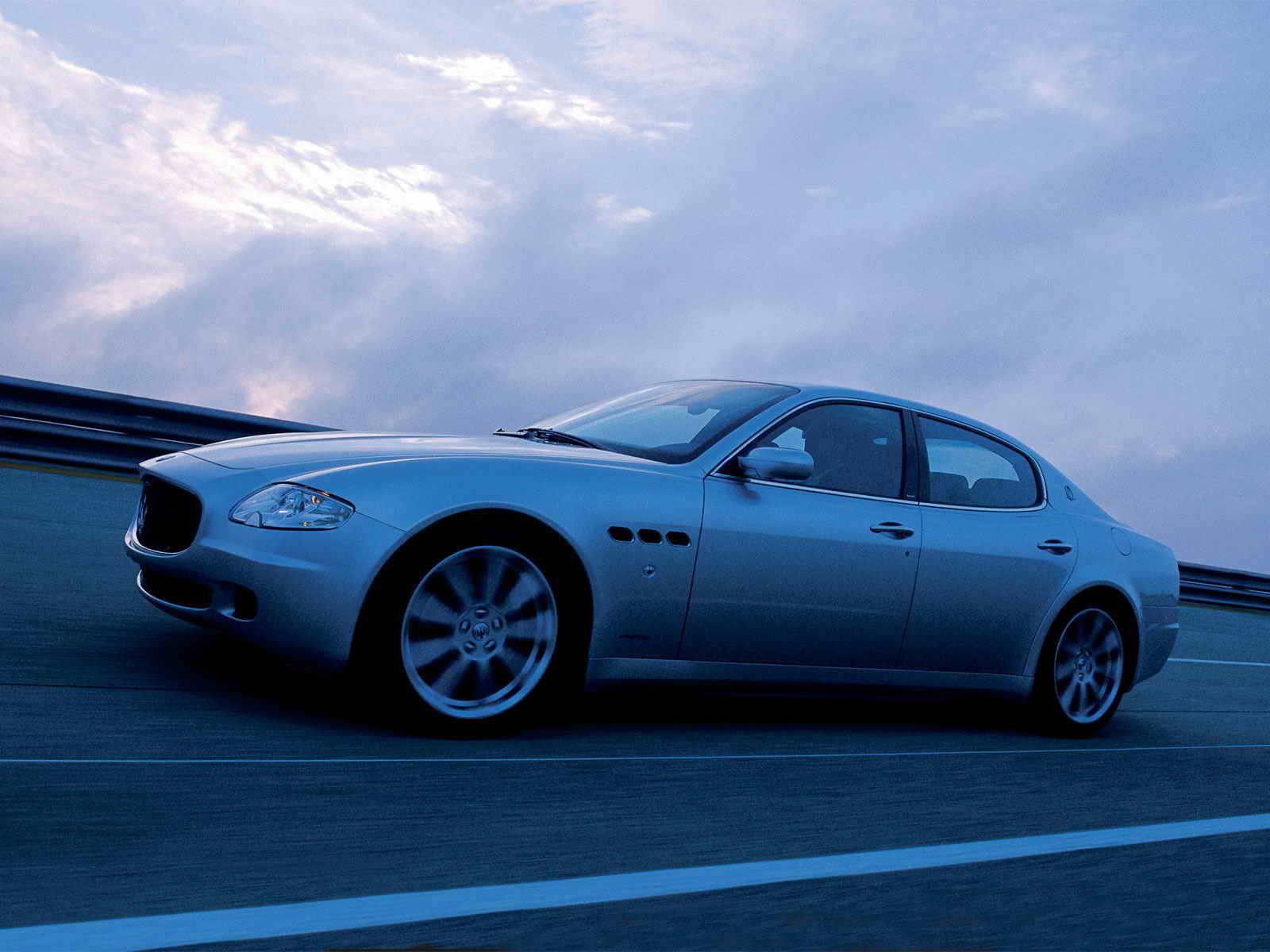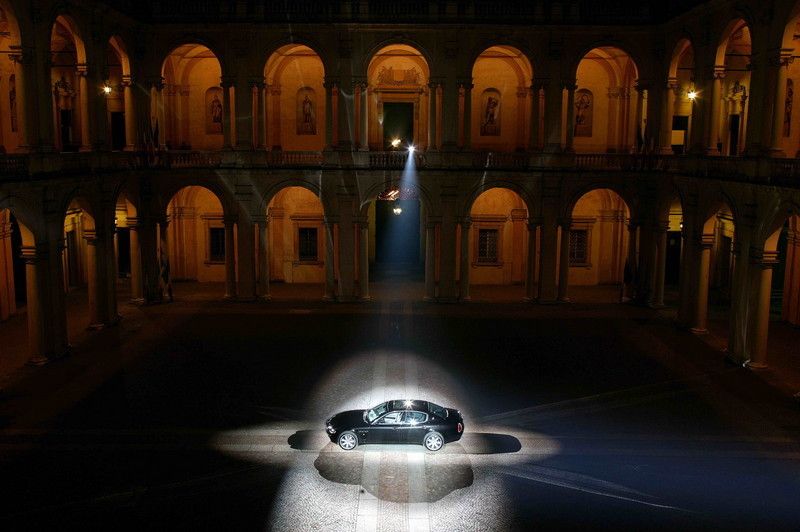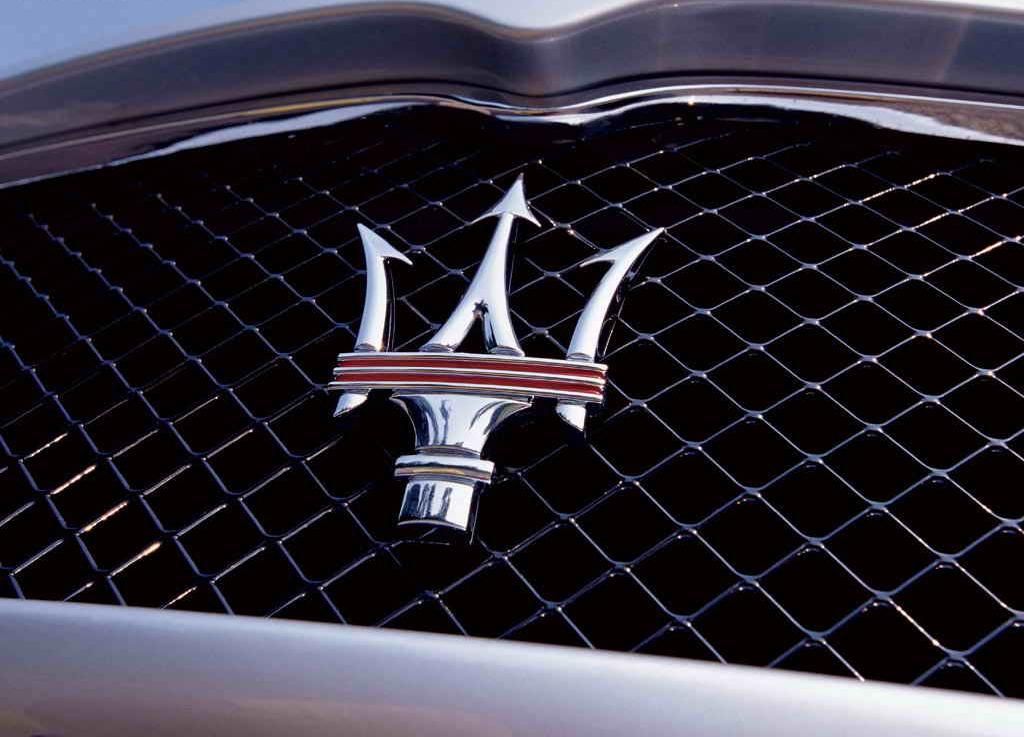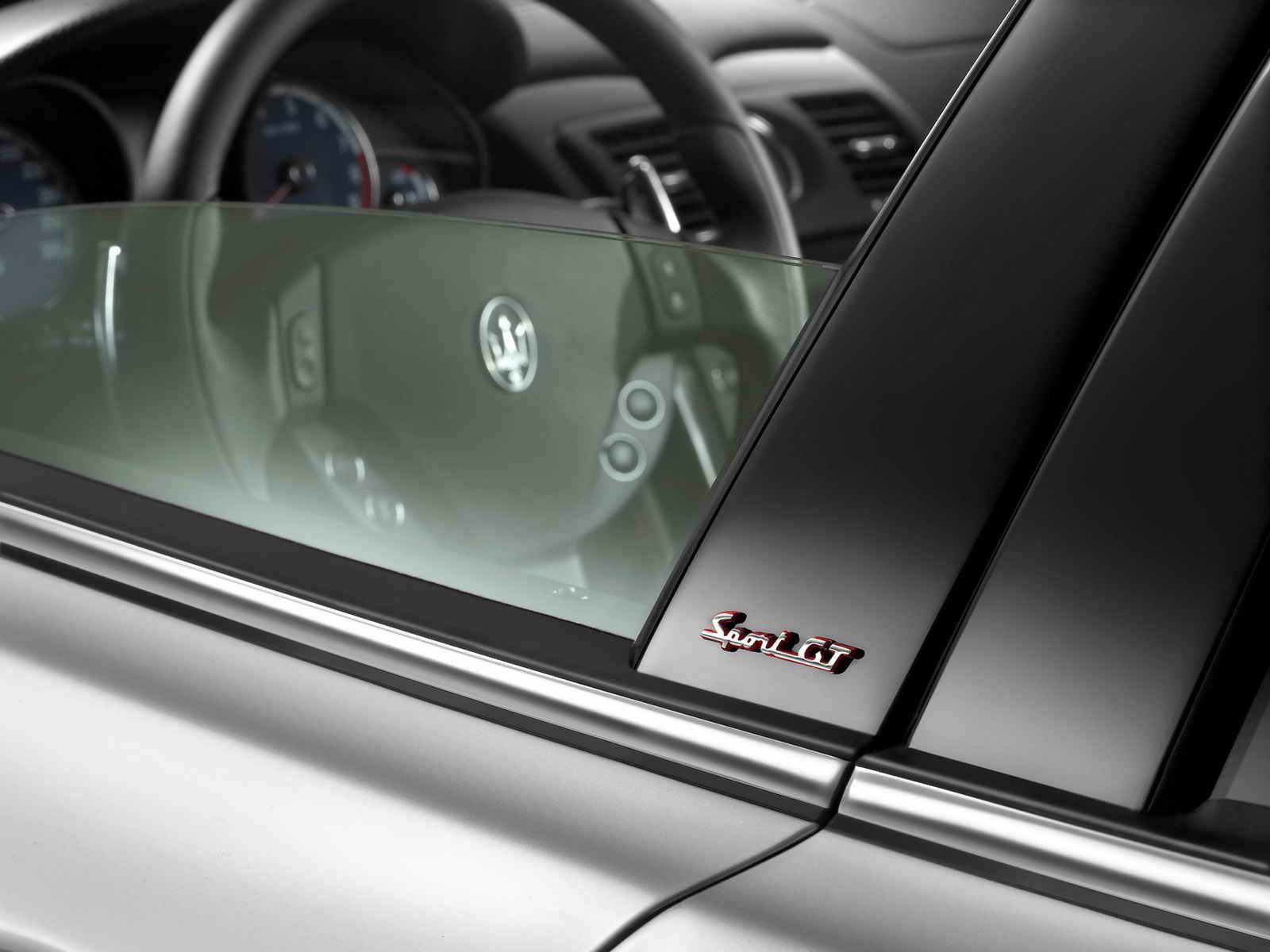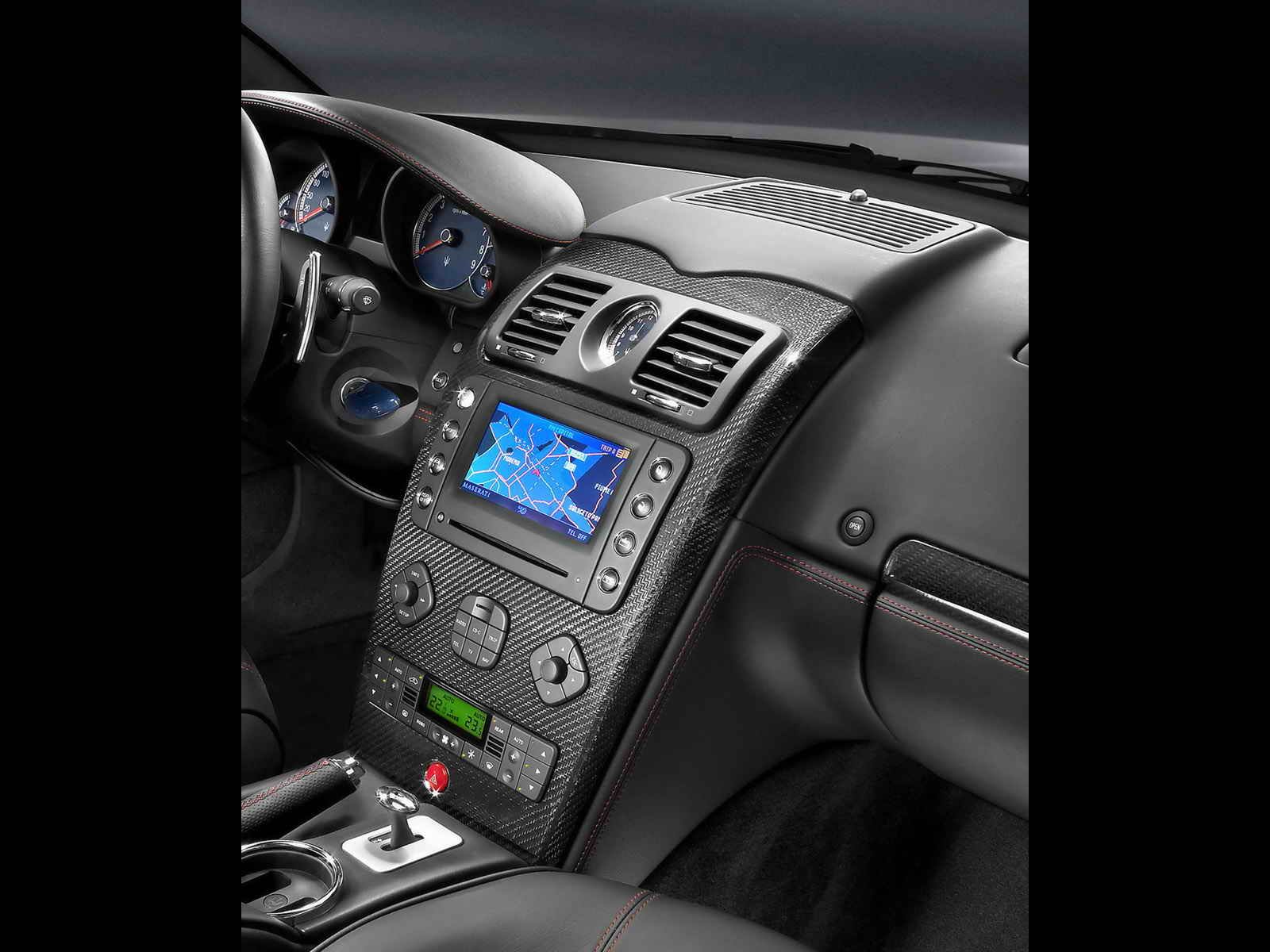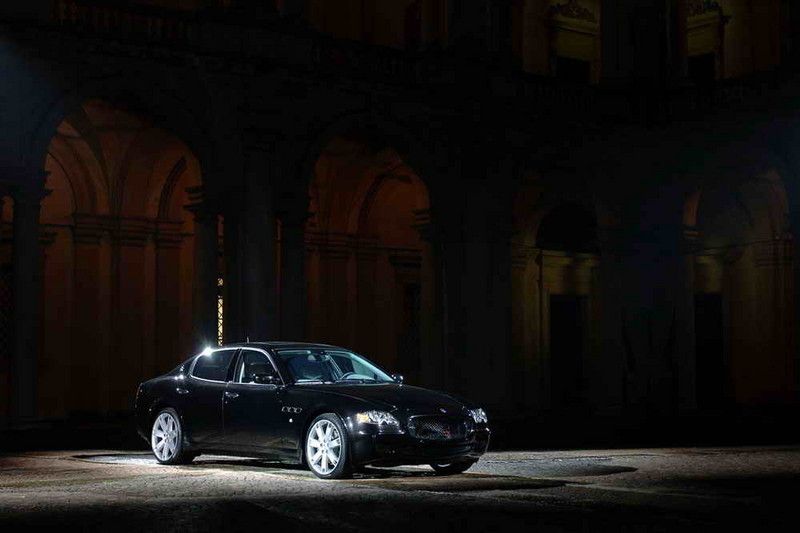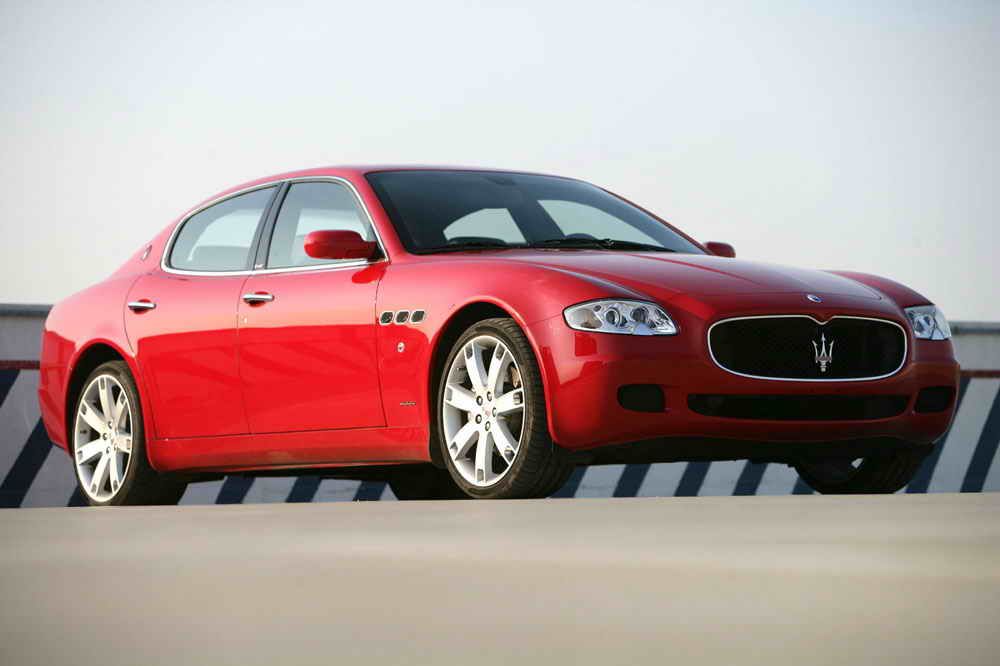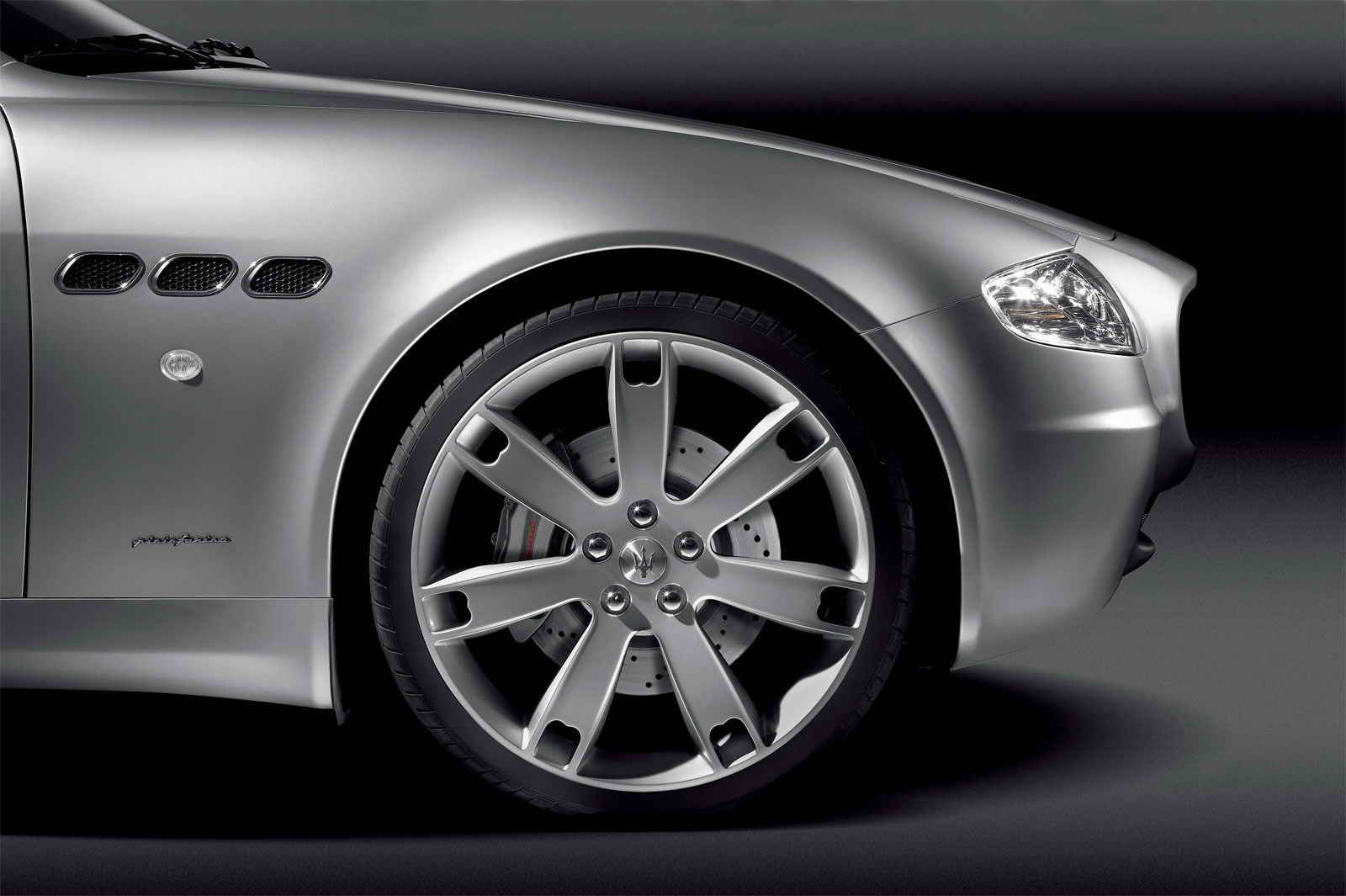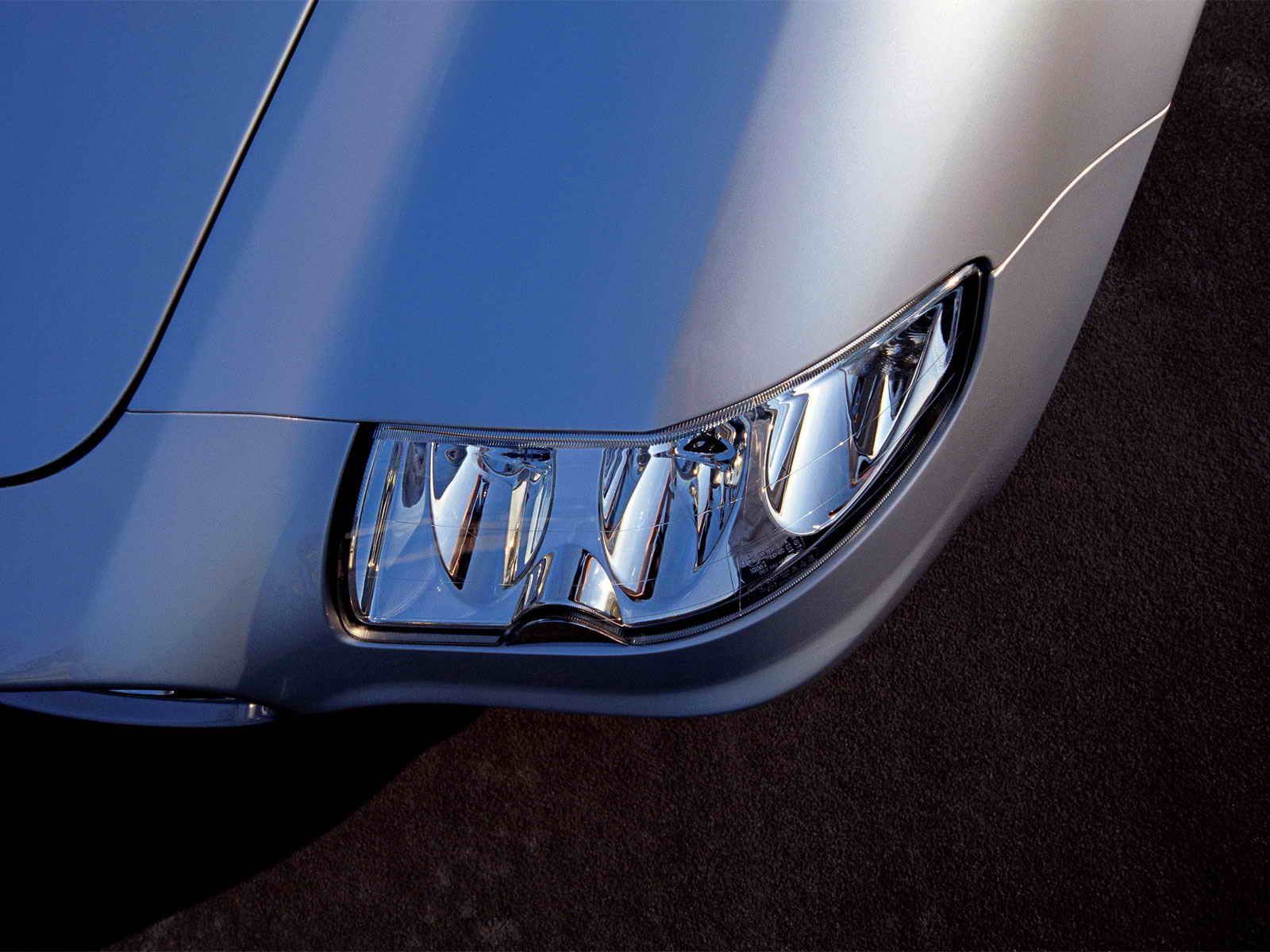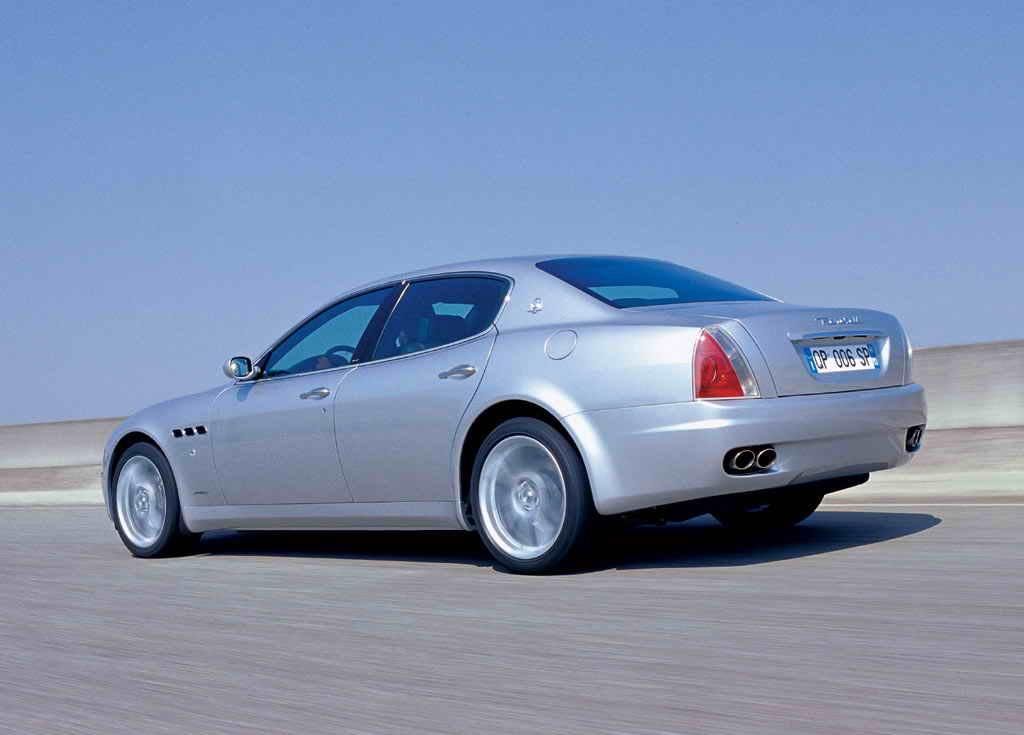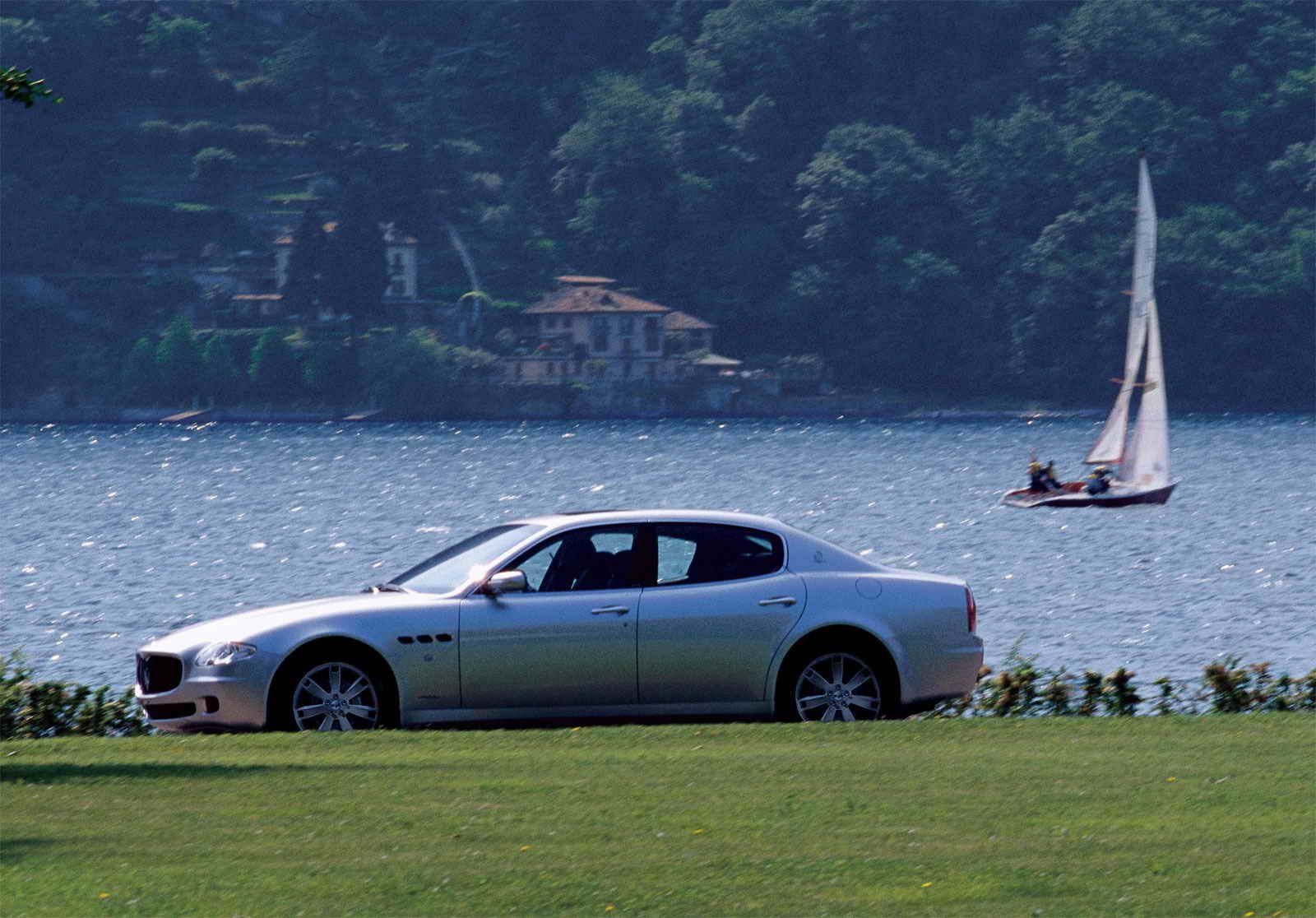Long before the Levante->ke4493 was even considered a possibility, Maserati->ke51 was making the Quattroporte->ke336. From the outset, the idea was a simple one – luxury, elegance, goosebump-inducing exhaust note, more than enough speed, and a legitimate backseat. These days, it sounds like the kind of formula used time and again to fill countless niche segments, but Maserati was doing it way before anyone else, building the original Quattroporte in 1963. The fifth-generation model was unveiled at the 2003 Frankfurt Motor Show->ke235, while the Sport GT trim level dropped just two years later. And even though high-level performance was always a defining characteristic of the Quattroporte, the Sport GT upped the ante with new suspension tuning, a quick-shifting transmission, better brakes, and a variety of sporty aesthetic cues inside and out.
Hand-built in Modena and bearing trademarked go-fast equipment from Ferrari->ke252, the Quattroporte Sport GT bends that tenuous relationship between performance and opulence. It’s a full-size luxury->ke505 sports->ke506 sedan->ke142 that toes the line, and if pushed, falls towards the checkered flag every single time.
Continue reading to learn more about the 2006 Maserati Quattroporte Sport GT.
2006 Maserati Quattroporte Sport GT
- Make: Array
- Model: 2006 Maserati Quattroporte Sport GT
- Horsepower: 400@7000
- Torque: 4500
- Transmission: 6 speed Manual
Model History And Background
As you may have guessed, “Quattroporte” means “four doors” in Italian – quite straightforward, which I can appreciate in the modern age of serial-number car names.
Moving on, there have been six generations of the Quattroporte, with the Trident vacillating a bit over the years, keeping the model on the shelf at various points throughout its history. The first generation was introduced in 1963 and ran until 1969, while the second-gen arrived five years later in 1974, running until 1978. The third generation was stretched between 1979 and 1990, followed by a short break before the arrival of the fourth generation in 1994. Production of the fourth-gen ended in 2001, while the fifth-gen came along in 2003 and lasted until 2012. Finally, the current sixth-gen model was made available for the 2013 model year.
After its debut at the Frankfurt Motor Show, the fifth generation hit U.S. shores with a preliminary appearance at the 2003 Pebble Beach Concours d’Elegance. In 2005, Maserati introduced two new trim levels – the mid-level, performance-oriented Sport GT, which we’ll talk about momentarily, and the range-topping Executive GT. The Executive GT was made unique with the addition of equipment like ventilated and massaging rear seats, an Alcantara roof lining, and veneered retractable tables for passengers in back.
In total, Maserati produced over 5,000 Quattroportes in 2006.
Exterior
Let’s start with the basics. The Quattroporte is by no means a small car. The fifth generation introduced a new platform for Maserati, stretching the old model by nearly 20 inches and extending the wheelbase by nearly 16 inches. This same platform would later be used for the GranTurismo and GranCabrio.
Longtime-collaborator Pininfarina was called upon to create the sexy curvature making up the exterior body panels. The front fascia is composed of an extended hood line that rises slightly from the grille towards the A-pillar. The headlights are small, and come equipped with bi-xenon lighting elements. The headlights also mark the rising fender line, giving the Quattroporte a planted look up front. You’ll find Maserati’s traditional trio of vents placed just aft of the front wheel wells.
The most prominent feature of the profile is the gentle, coupe-like roofline, which falls into high haunches in the rear. Chrome trim is seen everywhere. The rear end is truncated past the wheels, the taillights are small and triangular, and there are quad exhaust tips in the bumper.
The drag coefficient is 0.35.
To help the Sport GT model stand out amongst the other two trim levels, Maserati added a black chrome mesh to the front grille and side fender vents. There are also Sport GT badges on the B-pillars, plus up-sized 20-inch seven-spoke wheels with low-profile tires. The Trident badges also gets red accents, just like the old Maserati racecars.
Upon purchase, Maserati offered customers a slew of customization options, including a selection of 15 different exterior paint colors.
|
Exterior Dimensions |
|
|
Length |
199 Inches |
|
Width |
75 Inches |
|
Height |
57 Inches |
Interior
Pininfarina also ended up providing the interior design for the Quattroporte, and the look and layout is relatively simple and uncluttered. Drivers grip an updated multifunction steering wheel, behind which is a gauge cluster with blue facing and red needles. Drilled-aluminum sport pedals reside below. High-end leather upholstery is everywhere, and includes contrast stitching.
The center console houses a top-mounted analog clock, the navigation system, and various buttons for the dual-zone climate control. An onboard CD player and Bose stereo provide the music. There’s also a huge amount of carbon-fiber trim, which replaces the traditional wood grains for that high-performance look. Chrome accents add a little gloss.
The front seat design skews more towards comfort than sportiness, and lack the substantial supporting bolsters needed when the road gets curvy. They are, however, electronically adjustable, and there’s a good deal of space in the rear thanks to the Quattroporte’s extended wheelbase.
Like the exterior, interior customization was plentiful, with up to 10 colors to choose from when purchased new.
Drivetrain
Surprisingly, the Sport GT uses the same powerplant as each of the other trim levels. That said, the engine is certainly no slouch.
Powering the Quattroporte is a 4.2-liter DOHC V-8 built in Maranello by Ferrari (Ferrari-Maserati F136 family). It uses an aluminum-silicone alloy block and heads, a crossplane crankshaft, four valves per cylinder, and continuously variable intake timing.
Output is measured at 395 horsepower at 7,250 rpm, and 333 pound-feet of torque at 4,750 rpm. Redline is 7,500 rpm.
Routing all that to the rear wheels is a six-speed electrohydraulic DuoSelect transaxle, which was also sourced from Ferrari. With the correct drive mode activated, cog swaps occur in as little as 40 milliseconds – about 35-percent quicker than lesser trim levels. There are paddle shifters mounted behind the steering wheel, plus a full automatic mode if you wanna disconnect for a while. There’s no option offered for “Park,” and “Reverse” is activated via a separate lever on the console.
When it was first released, reviewers found the Sport GT’s transmission to be a bit clunky for a high-end luxury car, with many claiming a preference for a more traditional automatic gearbox. Maserati listened, and released the Quattroporte Automatica at the Detroit Motor Show in 2007.
But enough of all that, let’s get to the good stuff. Properly motivated, the Quattroporte Sport GT can hit 60 mph from a standstill in 5.1 seconds. Top speed is rated at 171 mph. While those numbers mirror the other Quattroporte trim levels, Maserati wisely equipped the Sport GT with a model-specific exhaust system, which sings the Italian V-8 baritone with gusto, especially when probing the upper limits of that lofty rev range.
It’s probably also worth mentioning that the Quattroporte get 12 mpg in the city, and 15 mpg on the highway.
Chassis And Handling
The Quattroporte uses a steel unibody with aluminum for the trunk and hood. The front and rear subframes are also aluminum.
Even so, this is no lightweight sports car – curb weight is measured in at a crushing 4,375 pounds. But that should be expected for a full-size luxury car, and Maserati did a good job managing all the heft.
Let’s start with the drivetrain placement, which puts the engine behind the front axle and the transmission way towards the back, making for a bonafide front-mid-engine RWD layout. In fact, this positioning creates a very impressive 47/53 front-to-back weight distribution, which means that even with more than two tons of mass to move around, the Quattroporte is eager to take to the corners.
Complementing this unexpected handling tenacity is a four-wheel independent suspension set-up, with unequal length control arms, forged aluminum arms and hub carriers, coil springs, and anti-roll bars. The Sport GT also comes with stiffer Skyhook adaptive dampers, which tie into the dual driving modes for either leisurely cruising, or harder apexes.
This dualistic nature extends to the rest of the car as well, with the choice between “Normal” mode and “Sport” mode affecting the shift speeds and electronic stability control.
Throwing the anchor are four-piston brake calipers made from titanium. Unique to the Sport GT are drilled brake rotors and braided brake lines.
The 20-inch wheels come wrapped in high-performance rubber, measured width-wise at 8.5 inches in front and 10.5 inches in the rear.
Prices
When new, the Quattroporte Sport GT came with an asking price of $112,200. These days, you can pick one up on the used market for just $20,000 to $30,000. That probably sounds like a steal, until you consider the cost to maintain and insure it.
Competition
BMW M5
Big, bad, and very fast. The M5 is everything you could want from a luxury sports sedan, with corner-hungry suspension, tons of technology and amenities in the cabin, and one bruiser of an engine package. Tucked behind that kidney grille is a 5.0-liter V-10 engine, which made its debut for the 2006 model year with 500 horsepower and 384 pound-feet of torque. There’s also a seven-speed sequential transmission with a direct link to the rear wheels. A sprint to 60 mph takes just 4.7 seconds, while top speed is electronically limited at 155 mph.
Read the full review here.
Mercedes-Benz S500
The “special class” Merc was a flagship with simply unflappable poise and confidence. The fifth generation was introduced in 2005, and came with larger dimensions and more power from three different engine packages, including a 5.5-liter V-8 with 382 horsepower and 391 pound-feet of torque. A seven-speed automatic transmission tackles gearshifts. If performance is the priority, consider the S600, which replaces the eight-cylinder with a twin-turbo V-12 good for 510 horsepower and 612 pound-feet of torque.
Read the full review here.
Conclusion
While the German competition certainly has a lot to offer, it’s the Maserati that still manages to walk away with that feeling of “specialness.” From the Pininfarina styling, to the Ferrari-derived V-8, to the impressive handling dynamics, the Quattroporte is a sedan that captures the spirit of a sports car far better than the Bimmer or Merc. There’s a delicacy to it, something that’s lost when stepping into the more brutal (but much faster) Teutonics.
If that sounds appealing, then maybe $25,000 for a low-mileage example makes sense. Just make sure you know the right mechanic…

